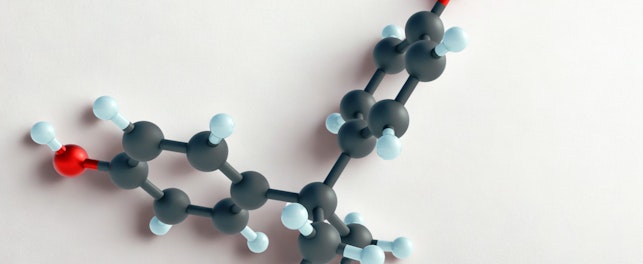SG 083.22
In May 2022, the first known settlement for socks made primarily of polyester with Spandex which contained BPA was finalized.
In early September 2021, dozens of sock manufacturers and retailers received 60-day notices from the Center for Environmental Health (CEH) for socks sold in California without Proposition 65 warning labels, and allegedly containing Bisphenol-A (BPA). The socks of concern are made primarily of polyester with Spandex. In May 2022, the first known settlement for socks containing BPA was finalized.
Bisphenol-A is a well-studied chemical, known to cause developmental and reproductive harm. It was added to the Proposition 65 list of chemicals in 2015. BPA is mostly used to make polycarbonate plastic, epoxy resins and thermal paper. In addition, BPA may be used as dye-fixing agents for polyester and polyamide textiles. BPA can be used in the production of flame retardants, fungicides, antioxidants and in PVC production. It may also be used in spandex production for antistatic properties.
Traditionally, BPA is not considered a high-risk chemical in textile fibers. Previous Prop 65 settlements for BPA were for sunglasses, thermal paper, or other non-textile products. This is the first settlement involving a failure to warn consumers of the presence of BPA in socks made primarily of polyester with spandex. The possible exposure route for BPA in socks is dermal absorption directly through the skin when wearing and ingestion via hand-to-mouth contact after touching or handling.
The injunctive relief in this settlement includes the following:
- Covered product: socks made primarily of polyester with spandex
- Substance: Bisphenol A (BPA)
- Reformulation: 1 part per million (ppm) BPA as measured by the Test Protocol, otherwise warning. The settling defendant cannot replace the BPA with any other phenols (such as Bisphenol S or BPS).
- Election to warn: settling defendant shall provide Clear and Reasonable Warnings for socks sold in California, if socks contain more than 1ppm BPA. A Clear and Reasonable Warning shall state as below:
![]() WARNING: This product can expose you to chemicals including Bisphenol A which is known to the State of California to be a developmental and female reproductive toxicant. For more information go to www.P65Warnings.ca.gov.
WARNING: This product can expose you to chemicals including Bisphenol A which is known to the State of California to be a developmental and female reproductive toxicant. For more information go to www.P65Warnings.ca.gov.
There are currently in excess of 900 chemicals in the Proposition 65 List. The chemicals listed are known to cause cancer or birth defects or other reproductive harm. Under the act, businesses are required to provide a Clear and Reasonable Warning before knowingly and intentionally exposing anyone to a listed chemical. This warning could be on the product itself, on its packaging, or by means of prominent signage at the point of distribution. The 60-day notice of violation is a legal document that often leads to settlement negotiations. Once the relevant settlement agreement or judgment is reached, it is required that the product manufacturer either reformulate the product or provide a warning label.
SGS Global Softlines has an extensive network of over 40 laboratories worldwide, with a strong team of committed professionals from multi-disciplinary backgrounds. Our internationally accredited state-of-the-art testing laboratories offer a comprehensive range of physical, chemical and functional testing services for components, materials and finished products. We help your company ensure quality, performance and compliance with international, industrial and regulatory standards worldwide. In the end, it’s only trusted because it’s tested. Discover more at www.sgs.com/softlines.
For enquiries, please contact:
Louann Spirito
Consumer and Retail — Softlines
US & Canada Softlines Business Head
t: +1 973 461 7919
© SGS Société Générale de surveillance SA- 2022 - All rights reserved - SGS is a registered trademark of SGS Société Générale de surveillance SA. This is a publication of SGS, except for 3rd parties’ contents submitted or licensed for use by SGS. SGS neither endorses nor disapproves said 3rd parties contents. This publication is intended to provide technical information and shall not be considered an exhaustive treatment of any subject treated. It is strictly educational and does not replace any legal requirements or applicable regulations. It is not intended to constitute consulting or professional advice. The information contained herein is provided “as is” and SGS does not warrant that it will be error-free or will meet any particular criteria of performance or quality. Do not quote or refer any information herein without SGS’s prior written consent.
Reference:
- Chemical Considered or Listed Under Proposition 65 – Bisphenol A (BPA)
- About Proposition 65
- Sample Warnings and Translations for Businesses



